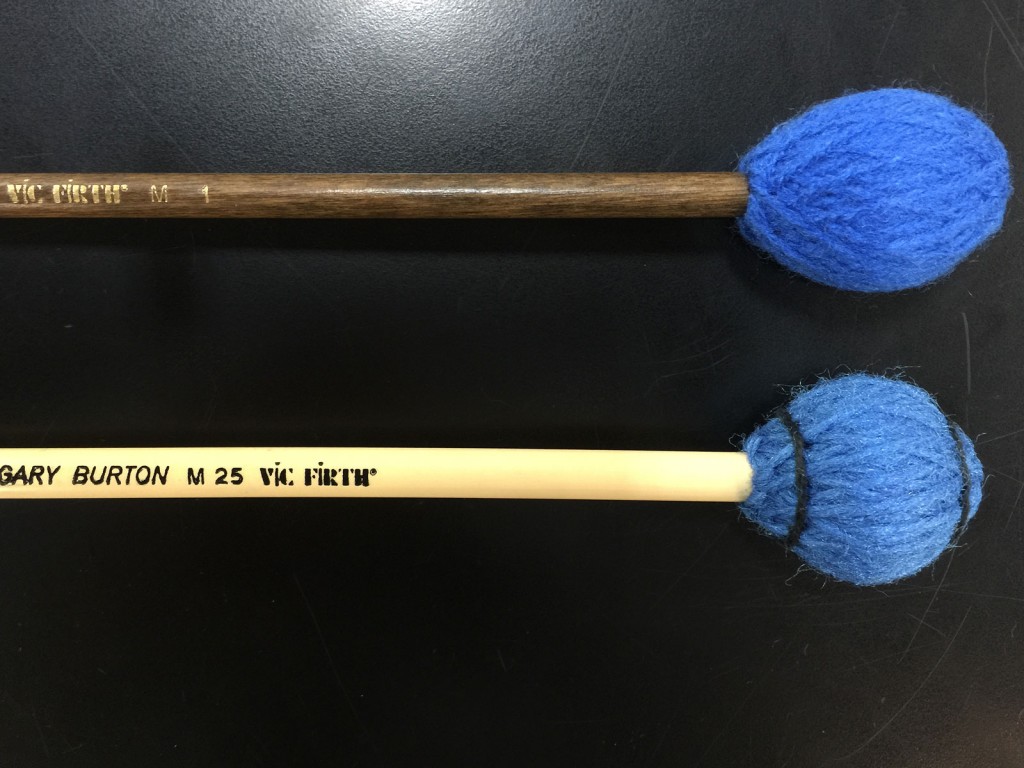Mallet FAQs – Marimba VS Vibraphone
Welcome back to the Chops blog! Today we’re going to continue our series on mallet-related frequently asked questions (FAQ) by explaining the difference between marimba and vibraphone mallets. While they are very similar in appearance, and can sometimes be used for the same purpose, there are significant differences in marimba and vibraphone mallets.
The differences between marimba and vibraphone mallets begin with the materials used in their construction. The head of both style mallets contain a rubber core, but the material wrapped around that core varies. Marimba mallets use a softer yarn than vibraphone mallets, which use cord. The harder cord and rounder shape of the mallet head allows the mallets to produce a clear sound from the metal bars of the vibraphone.
Note the differences in appearance between the Vic Firth marimba and vibraphone mallets below. The M1 on the left is a popular marimba mallet. The M25 vibraphone mallet on the right was designed by Gary Burton, the world’s foremost vibraphonist.
Another important difference between marimba and vibraphone mallets is the material used for their shafts. Both are commonly available in birch or rattan, but marimbists and vibraphonists have different preferences. Marimbists typically prefer the rigidity of birch shafts, while vibraphonists favor rattan. Its flexibility is better suited to vibraphone techniques like mallet dampening.
In addition to their respective instruments, both mallets can also be used to play suspended cymbals. In fact, they are preferred over timpani mallets, whose wood cores can be damaged and destroyed by the vibration of cymbals.
If marimba and vibraphone mallets are very similar, can they be used for the same purpose? Yes, but only in certain circumstances. The soft yarn heads of marimba mallets limit their volume, and therefore effectiveness, on the vibraphone. However, vibraphone mallets can be used on the marimba for a clear, cutting tone. Jazz musicians who play both instruments simultaneously often choose vibraphone mallets for this purpose. In this video, Dave Samuels, with the Caribbean Jazz Project, uses vibraphone mallets while soloing on the marimba and then comping on the vibraphone.
Advanced percussionists, such as high school or collegiate students should own both marimba and vibraphone mallets. Serious soloists will have several sets in varying styles and hardness (see our previous mallet FAQ on marimba mallet hardness) available in their mallet bag.
We hope this guide has helped you understand the difference between marimba and vibraphone mallets. Please contact us for assistance choosing mallets or for recommendations. See you next time!


No Comments